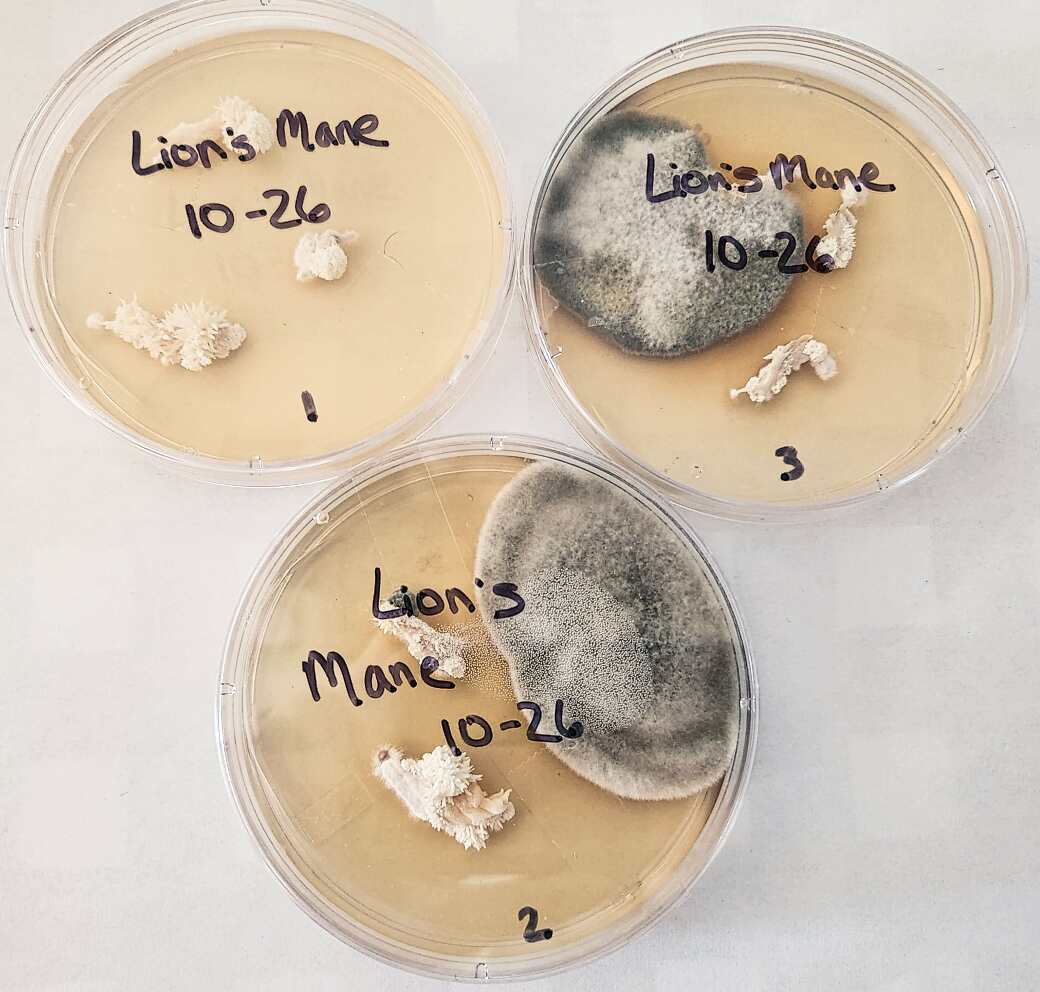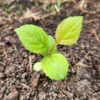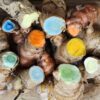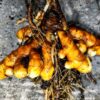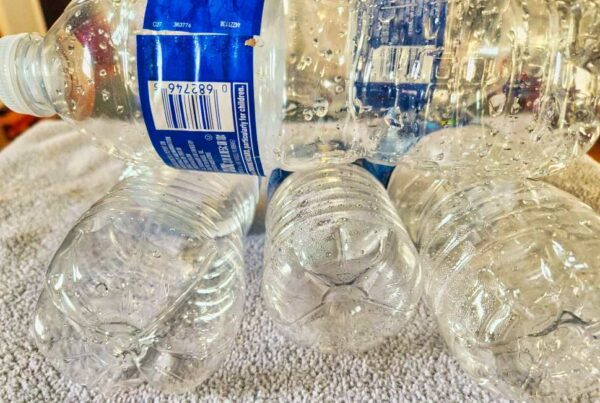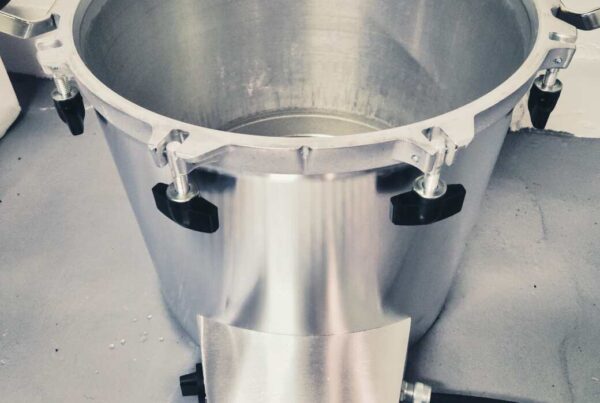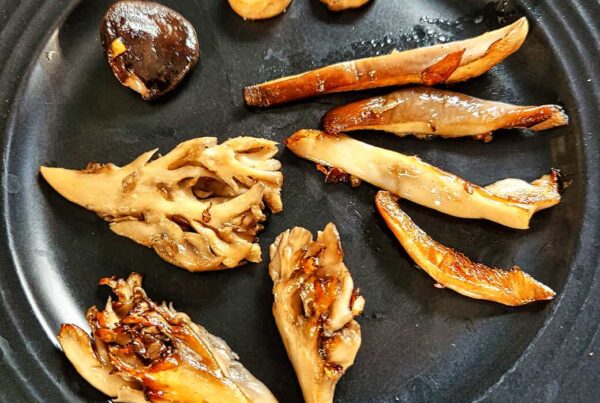If you are new to cloning lion’s mane mushrooms (hericium erinaceus), you may wonder how to distinguish between healthy mycelium growth and contamination. The goals of this post are twofold: First, this post will provide a brief overview of why and how to clone lion’s mane mushrooms. Second, this post will provide pictures to help you learn to distinguish between clean and contaminated lion’s mane clones.
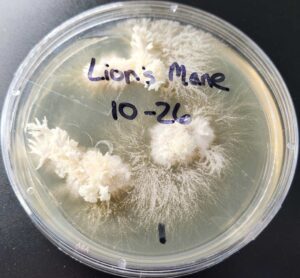
Why Clone Lion’s Mane Mushrooms?
Taste– Lion’s mane mushrooms have a sweeter flavor than traditional grocery store mushrooms (such as white button and portobella). Their texture is light and flaky and resembles seafood. As such, they are commonly used as a crab substitute in main dishes. These mushrooms are not widely available in stores at this time, so growing your own may be a delicious option!
Medicinal Value– Lion’s mane mushrooms likely have medicinal benefits. Most notably, studies have found possible cognitive benefits in people who supplement with lion’s mane. Lion’s mane mushrooms may also improve mental health, potentially reducing some symptoms of depression and anxiety in human participants. Many studies on lion’s mane mushrooms to date have been conducted with animal rather than human participants, so additional research should be conducted. However, frequent consumption of mushrooms in general have been found to lower risk of certain cancers in humans.
Ease of Growth– Lion’s mane mushrooms are easy to grow at home. They are fast- growing and produce shaggy, pom-pom-shaped white fruits. These mushrooms are eye-catching at farmer’s markets and will last about a week after picking if refrigerated properly. They can be grown in jars; see this post for information on this setup.
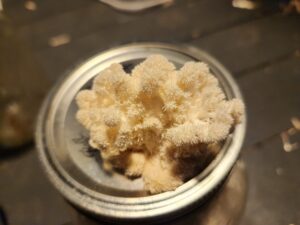
How to Clone Lion’s Mane
Creating a Semi-Sterile Environment
If you plan to clone your lion’s mane mushrooms at home, start by referencing this post for information on creating a semi-sterile environment.
Choose a Winning Mushroom
The fresher the mushroom, the better it will be for cloning. Some sources suggest mushrooms must be cloned within two days of being picked. However, I have had success using mushrooms up to one week old. Whatever their age, mushrooms should look fresh and not visibly dirty. I also prefer using the largest mushroom of a bunch, as large mushrooms are easier to take samples from than small mushrooms. If in doubt of a mushroom’s identity, don’t clone it! Be sure you are 100% certain of the identity of any mushroom you plan to consume.
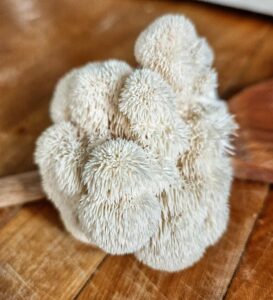
Choose the Right Petri Dish
Although you can make your own agar plates, I highly recommend purchasing them pre-made for your first cloning adventure. They are available through several vendors online. I use potato dextrose agar (PDA) plates, as this media has an incubation temperature of 65-77 degrees Fahrenheit and work well in normal room temperature settings. Some sources recommend malt extract agar (MEA) instead, but this media requires higher temperatures for incubation (77-86 degrees Fahrenheit).
Taking a Lion’s Mane Clone
- If using a semi-sterile setup, place materials in front of your working fan/filter contraption or other device for clean airflow.
- Sterilize your gloved hands and working surfaces with rubbing alcohol. Sterilize your scalpel or knife with an open flame.
- Break the lion’s mane mushroom open with your hands and cut out a small internal portion with the scalpel. Be sure not to touch the outside of the mushroom with your scalpel, as this may contaminate your sample.
- Open your petri dish and place the sample toward the middle. Immediately close the dish.
- Secure the petri dish with scotch tape or parafilm. Label the plate with mushroom variety and date. Wrap with plastic wrap to prevent outside contamination as your clone becomes established.

Contaminated Lion’s Mane Clones
If contaminants were introduced to your petri dish, either from the air or from your mushroom sample, you will see signs within days. Once you are familiar with the growth habits of lion’s mane mycelium, you will easily notice when something looks funny. However, some types of mold look like mycelium, at least for the first few days. The below pictures will help you distinguish between clean and contaminated lion’s mane clones.
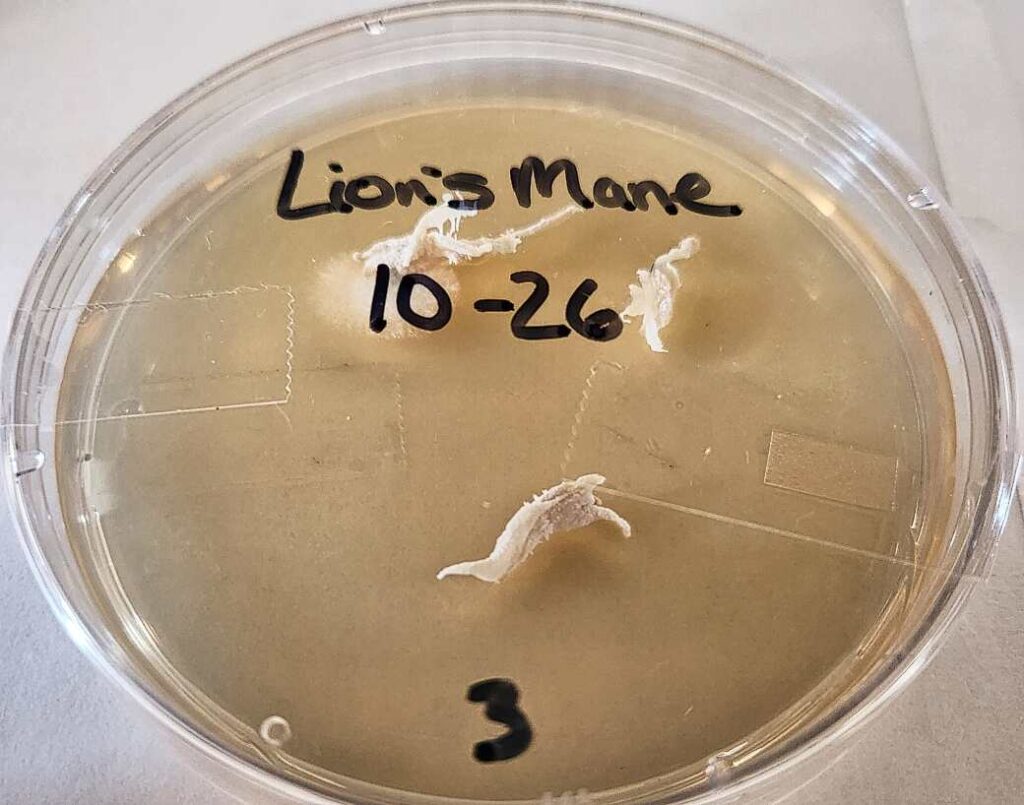

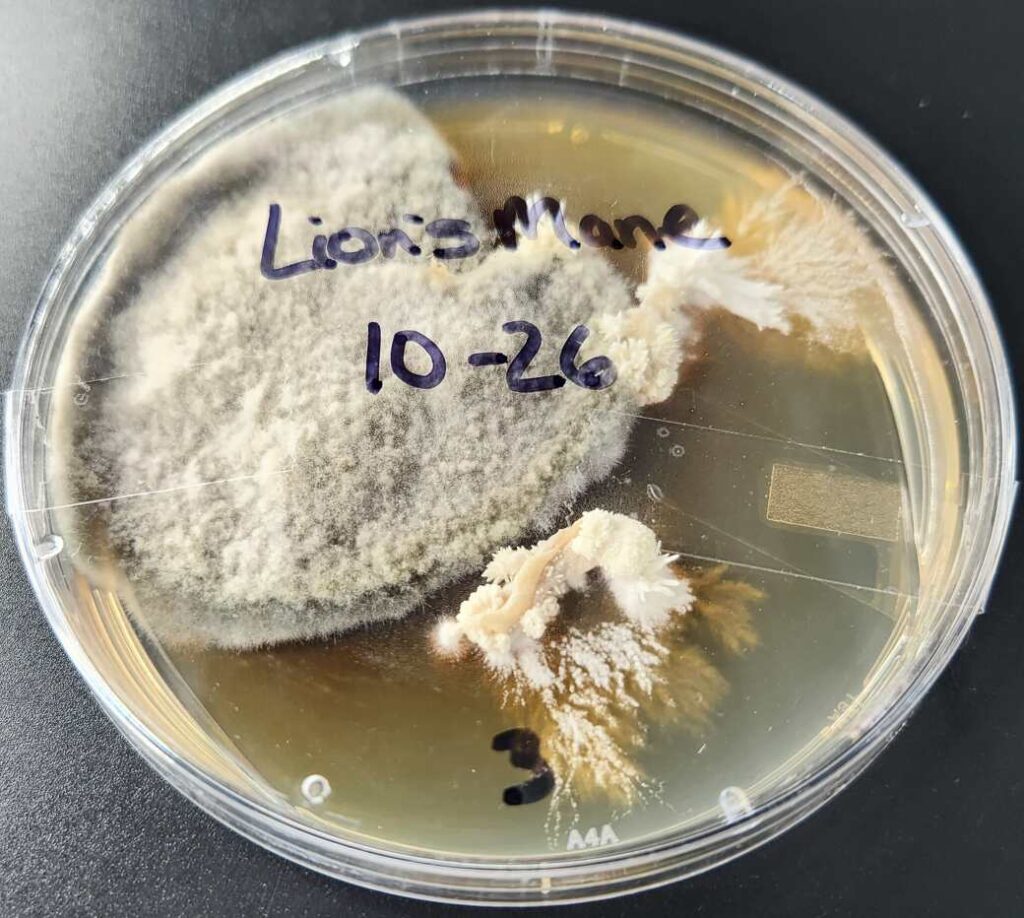
If your mushroom sample was contaminated, you may notice fuzzy growth within days. For example, see the progression of the top left clone on plate 3, above. The mold starts off looking similar to myclium (white), but quickly turns darker in coloration and expands to take over much of the petri dish. Similarly, see the progression of the top two clones on plate 5, below. The mold starts off looking clean, but quickly expands and ruins the dish.
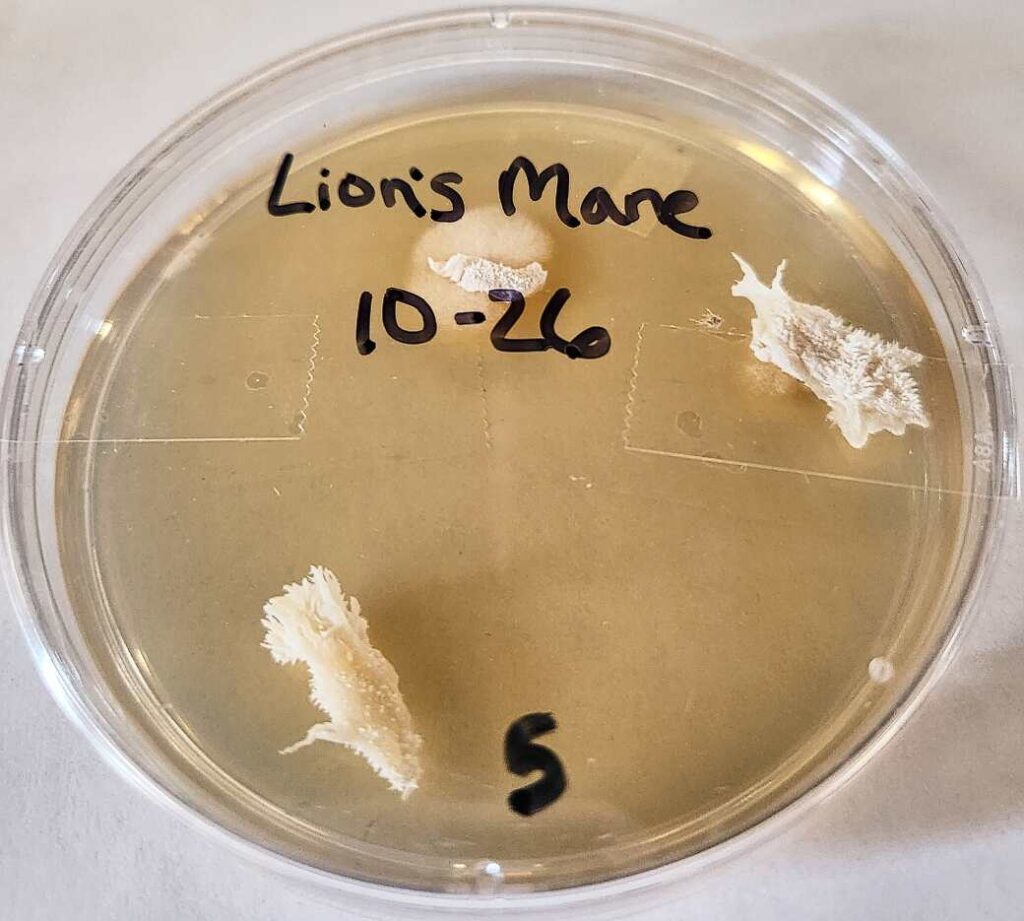
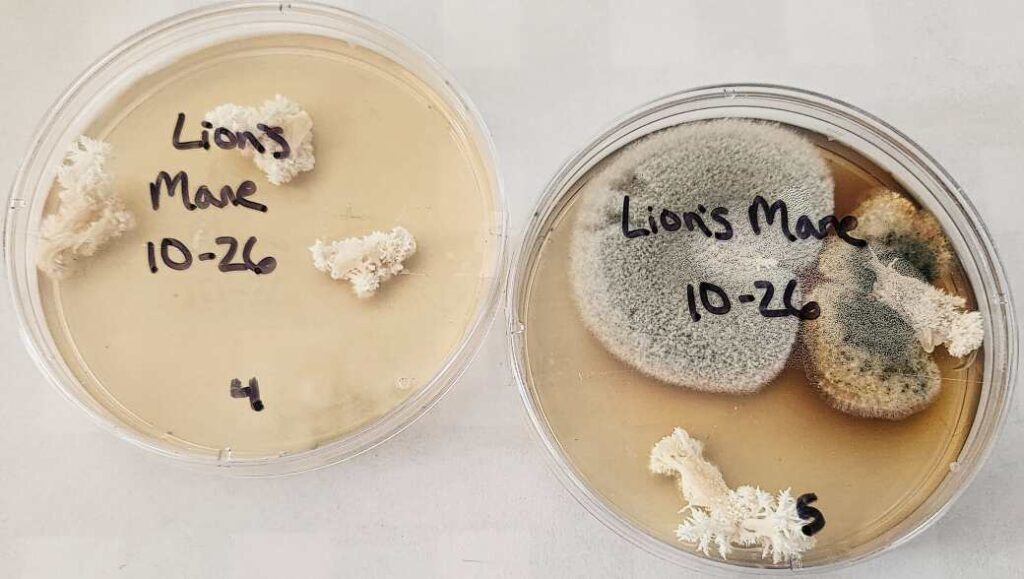
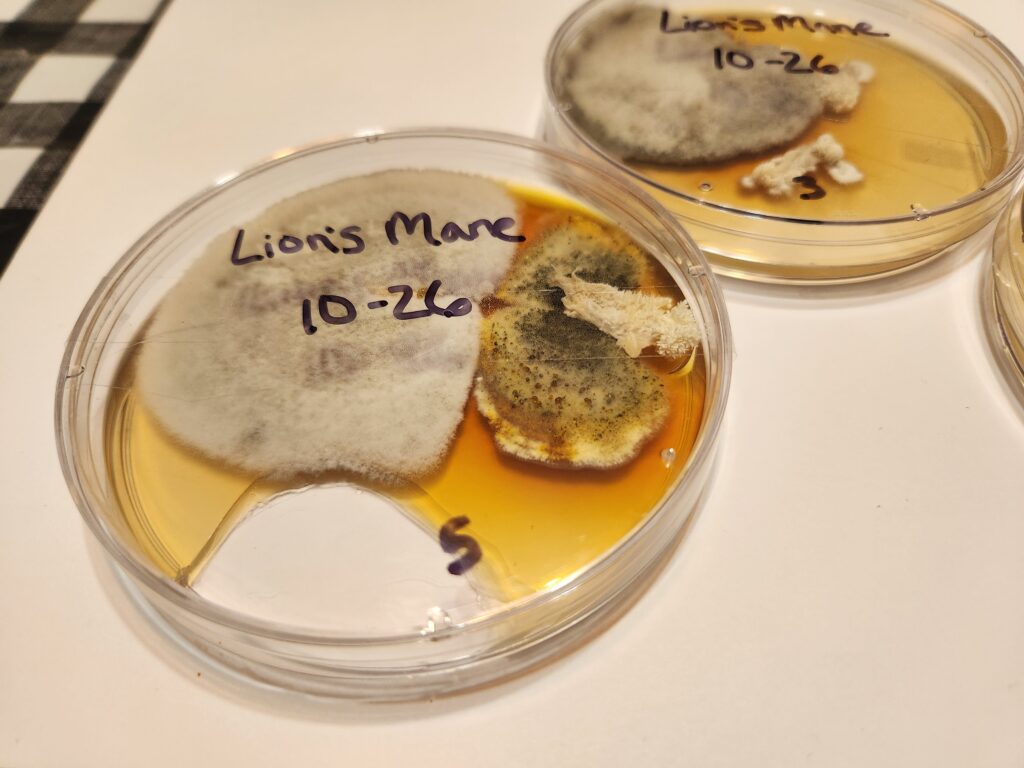
Of note, cutting out areas of contamination is ineffective, as the mold or bacterial growth will recur. If you have clean mycelial growth on a contaminated plate (such as the bottom clone on plate 5 above), you will want to cut out the clean portion and place on a new agar plate instead. If cut out quickly enough, this clone may do well and remain clean. Below, see the transplated clone 5 starting mycelial growth on the new plate (middle photo) and having taken over the entire plate (right photo).
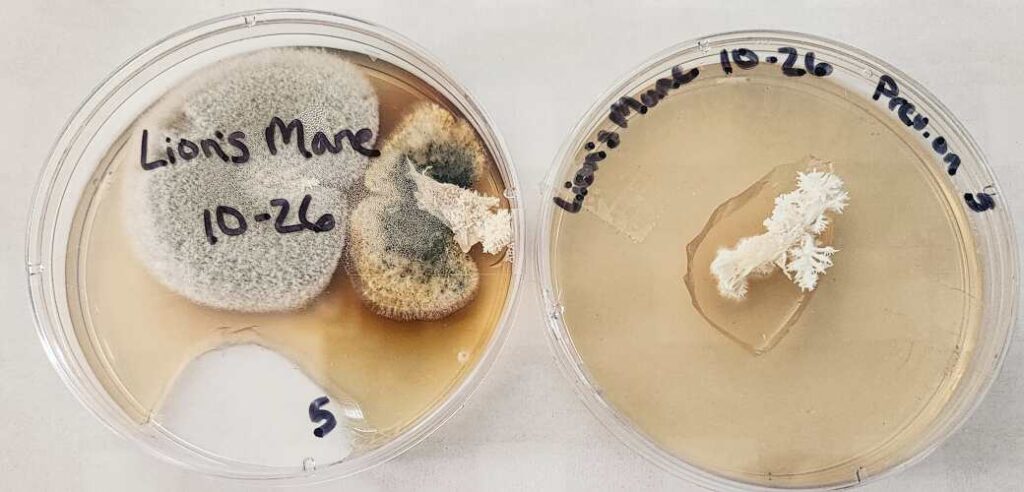
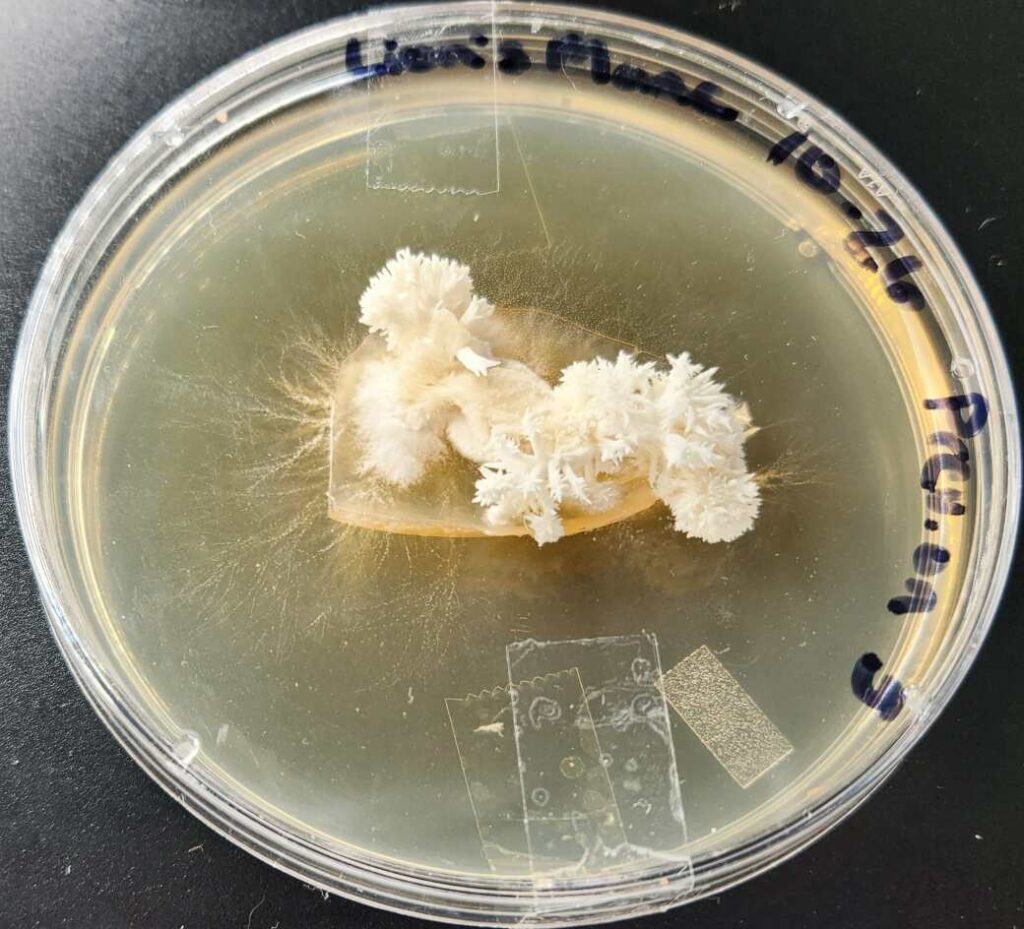

Successful Lion’s Mane Clone
The below photos are of successful, clean lion’s mane clones.
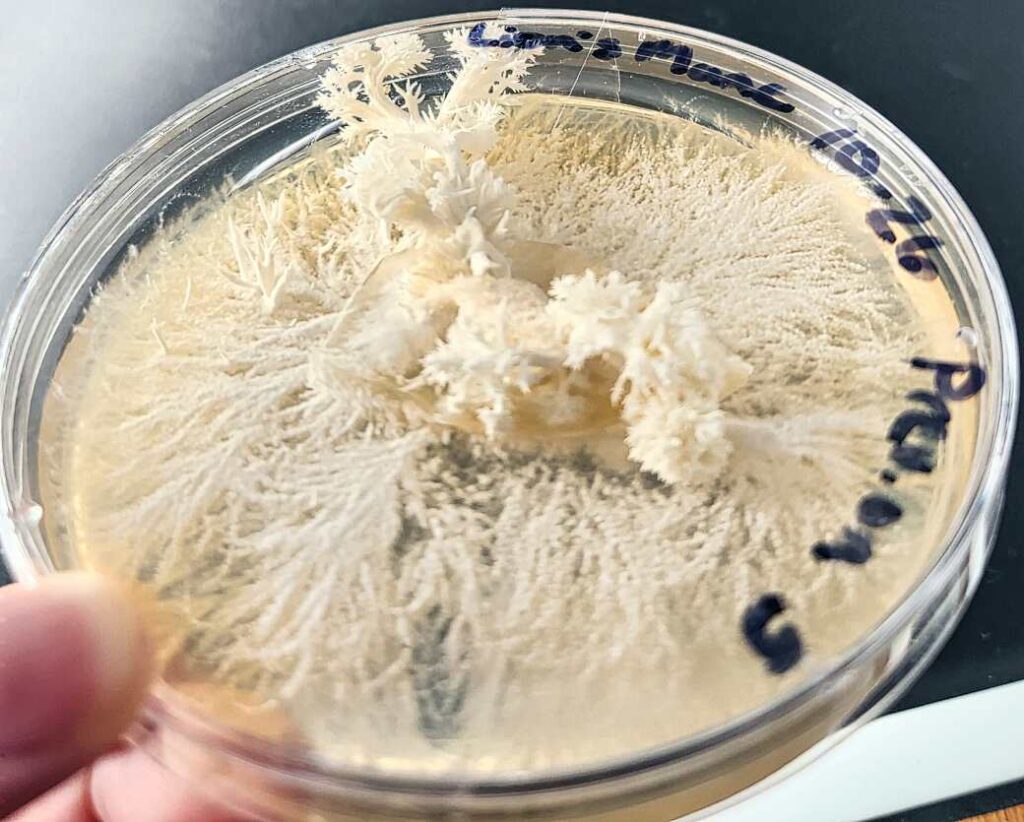

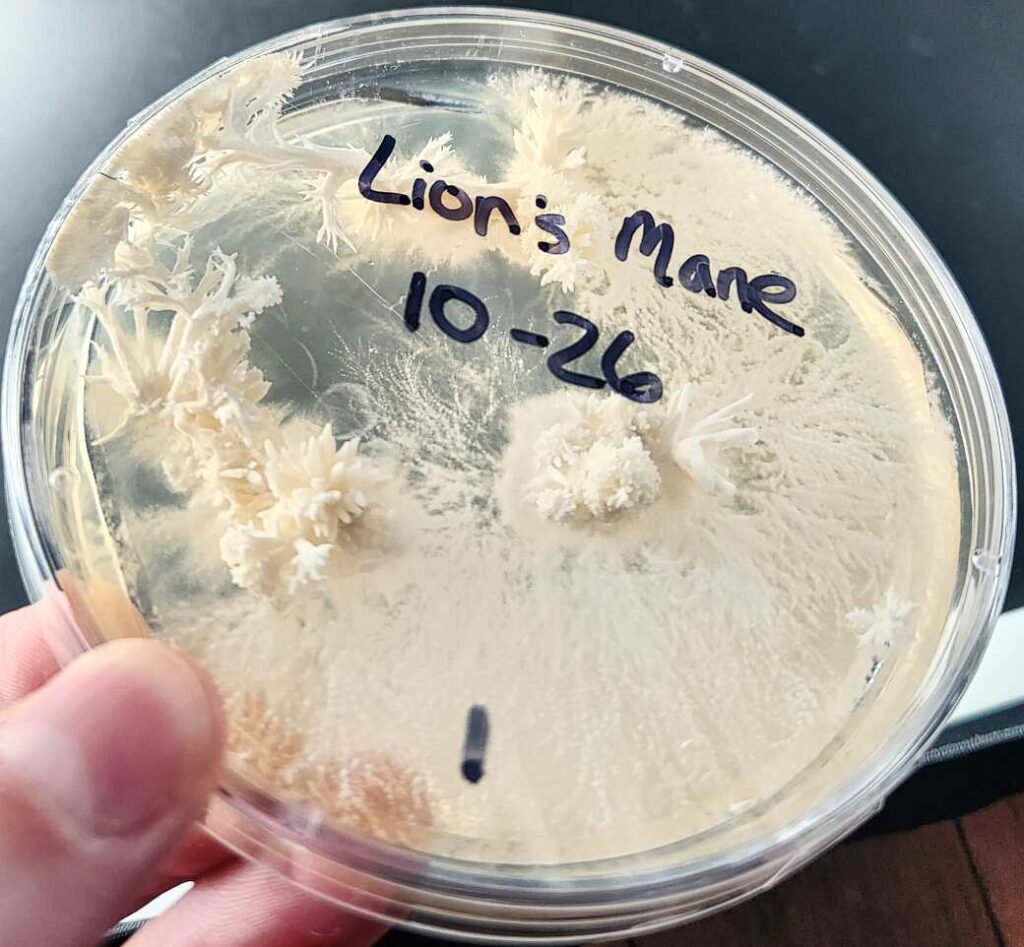
The below photos are the back view of successful lion’s mane clones.
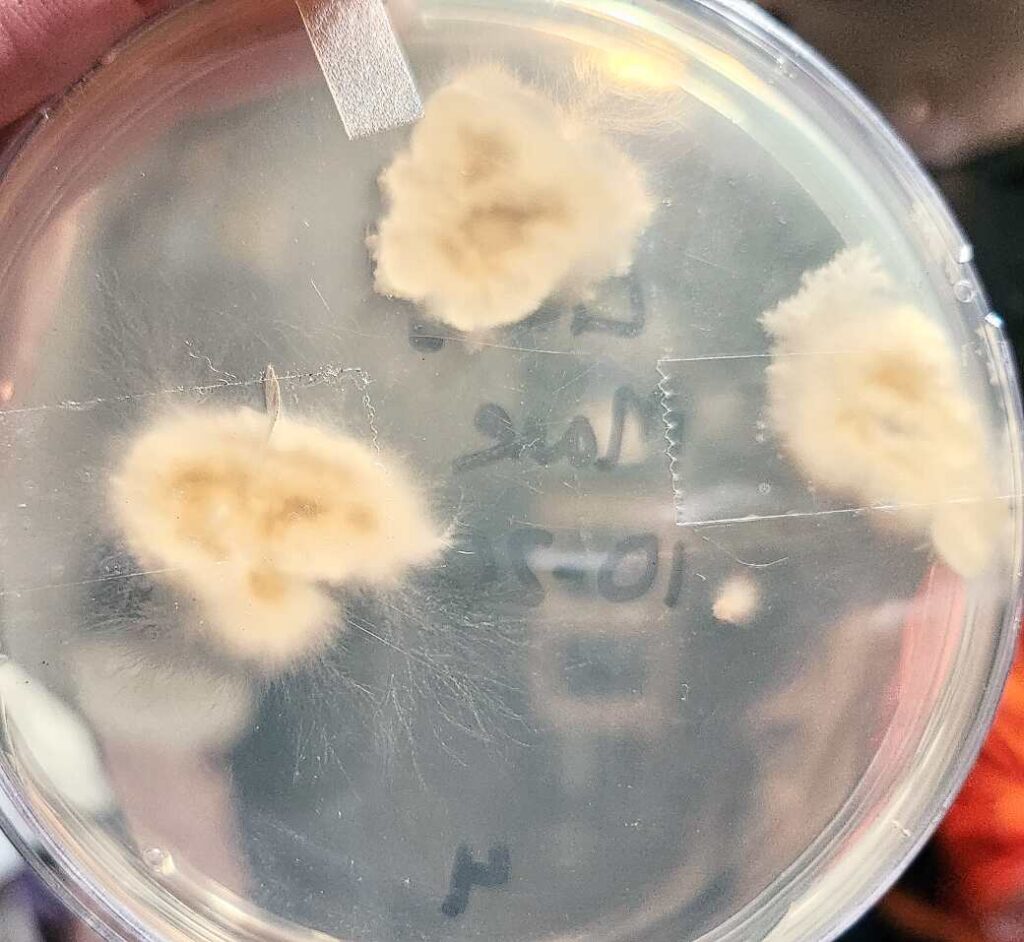
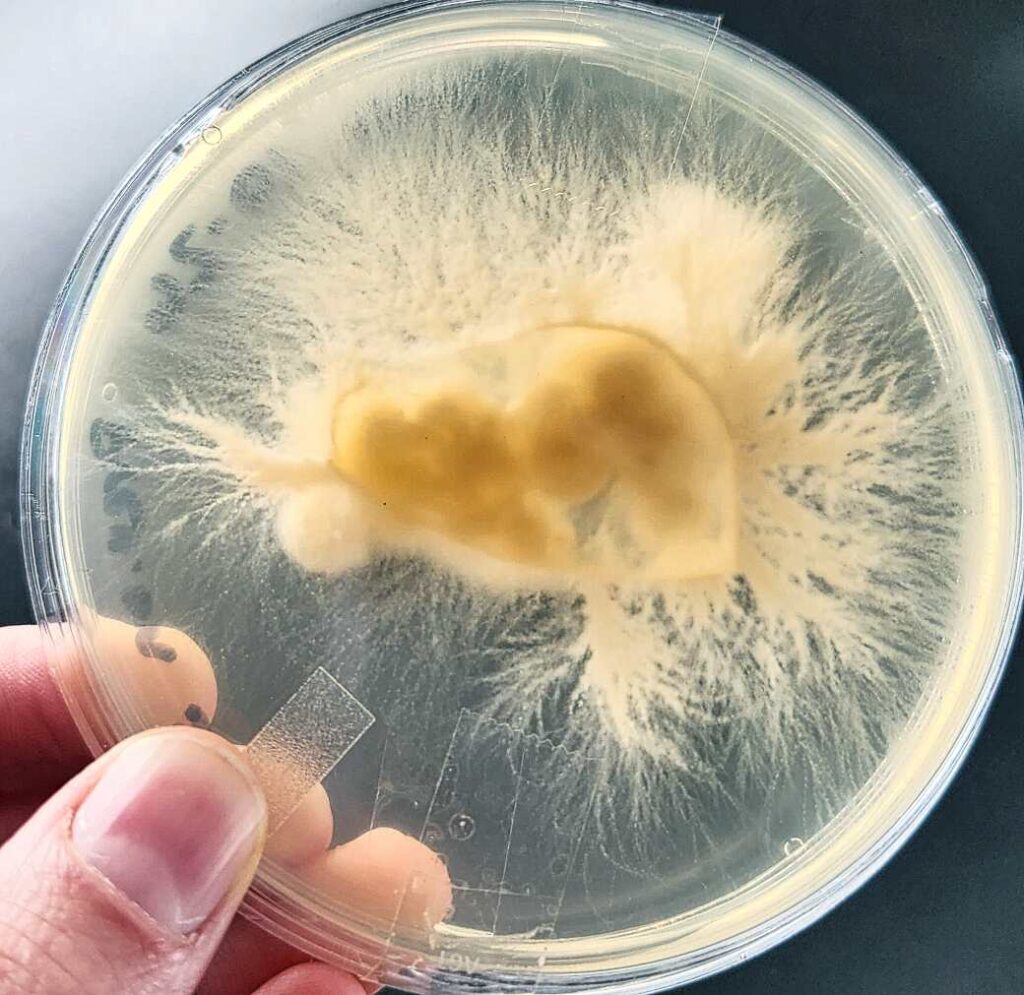

Note that clean mycelium growth looks wispy or thread-like at first, whereas contamination tends to look more dense. Clean growth is typically white or off-white, whereas contamination can be any number of other colors (i.e., gray, brown, black, green, red).
Once you have made it this far, celebrate by jumping up and down a few times. Congratulations on successfully cloning lion’s mane mushrooms!
If you want to use these clones to grow your own mushrooms, your fungi journey is just beginning. Your next step will be using these clones to inoculate grain spawn. Check out this post to learn about transferring mushroom clones to jars. (Yes, this post is written for king trumpet mushrooms, but the process for these two mushrooms is similar; keep jars around 65 to 70 degrees Fahrenheit for best results). There’s no rush here, though. Agar plates with cloned lion’s mane mushrooms can be safely stored in the refrigerator for up to 6 months.

